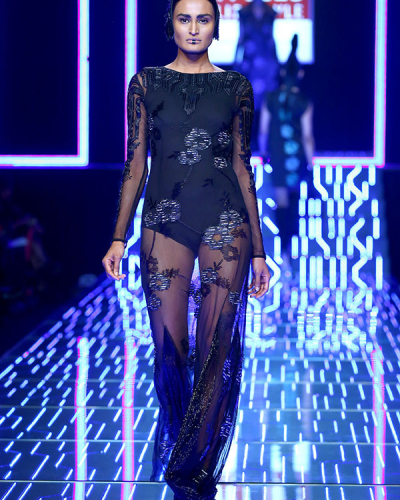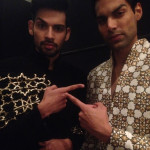The Poppy Redux
The fashion pack’s passion for Indian floral prints never really fades. Their ardour started with the lotus and was soon followed by the dainty rose. And it took them only a few years to pursue another traditional floral pattern with a significant Indian historical past to become their new muse – the poppy. Given the roller-coaster graph of its presence through the years, the delicate blossom has now finally managed to take the world of fashion by storm with its avant-garde representations. And it’s only fair to announce the arrival of this new floral motif that has caught the fancy of designers.
After ruling sartorial choices for years together, the poppy is given a new joie de vivre with a fresh spin and a contemporary perspective by the designers. Fashion designer Nachiket Barve says, “Design is all about re-interpretation. It’s imperative that the design element is re-imagined and recontextualised by designers to make a mark, whether in terms of technique, material or placement.” The poppy has impressed fashion designers across the globe, with its versatility and a high design potential of its simple structure. Fascinated by the floral motif, designer Rahul Mishra has always been inspired by the original design pattern of the poppy for his collections. “The poppy motif has its roots in the Mughal and Islamic arts, which has always been geometric in nature. The flower was mostly depicted in a four to five petal geometric pattern,” he says.
FROM FLOWER TO FASHION
The bright fragile blossom has been often misunderstood as a foreign pattern but every petal is an Indian flora. The poppy has a prominent past of more than 100 years when it was associated with eminent Indian Mughal emperors. Throughout the Mughal period, the imagery of the flower or the poppy plant was used as an adornment on prolific court objects such as jewellery, daggers, sheaths and sword hilts.
Much later, the ‘Mughalised’ pattern inspired the Indian weavers to use traditional motifs in hand-woven textiles of the country. Florals – now a fashion staple – were a dominant design theme in Indian textiles, when Europeans landed on Indian soil in search of spices. By the mid-17th century, the Indian cloth was being sold as far as Japan, Africa and the Middle East. The textile patterns such as the paisley, the poppy, the rose and the elephant, amongst others, further influenced designers all around the world.
The ’60s era of the mod saw a revival of the poppy in psychedelic and pop-art styles. This was the time, when prints either meant poppy, paisley, op-art patterns or polka dots. But this time, the poppy fell short to match up to the rage for the paisley – a recent import from the West.
POPPY GOES POP
Infused with a new-fangled approach, the poppy has now carved a niche for itself in the last few years. Among the current crop of the Indian fashion designers, many have incorporated the poppy print in their collections inspired by the Mughal geometric pattern or have revived the ’60s retro design of the flower. The endless list includes the likes of Namrata Joshipura, Rimzim Dadu, Gaurang, Ankur and Priyanka Modi, Pia Pauro, Pankaj and Nidhi, Rahul Mishra, Sanchita, and Anita Dongre, who have utilised the blossom motif in new forms – from geometric, whimsical to paint-esque customisation through screen printing or surface ornamentation.
THE FOREIGN CONNECT
The International runways witnessed multiple versions of the poppy motif. Giving it a new lease of life this autumn winter season is Dolce and Gabbana – the red, white and black bouquet of poppies were seen on everything from dresses, tops to accessories. Burberry’s Spring/Summer’14 collection showcased 3D embellishments of the flower. Prada’s Spring/Summer’13 collection had the poppy print interpreted in the quirkiest way possible, while Louis Vuitton created an India-inspired handbags range for Summer 2013. Chanel’s Paris Bombay Pre-fall collection’12 used the poppy plant print on the Indian-inspired silhouettes.
Related posts from Verve:
Verve Trending
Sorry. No data so far.
us on Facebook to stay updated with the latest trends







